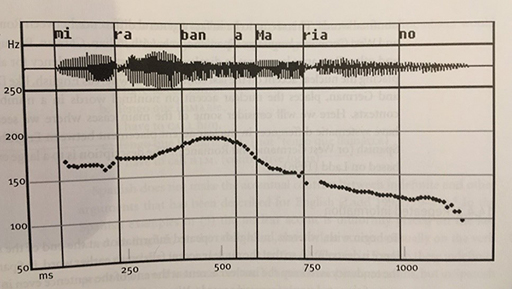4.1 Basic intonation patterns in Spanish
In both Spanish and English, there are two main turning points or signposts for the realisation of intonation: lexically stressed syllables and ends of phrases. Tonal contours associated with stressed syllables are known as pitch accents. In Spanish, in neutral declarative sentences, the last pitch accent is generally perceived as having greater prominence than the preceding accents, despite the fact that it normally has a smaller actual rise in pitch. Linguists call this pitch accent the nuclear accent of the phrase (indicated by small capitals in the examples below), and the other pitch accents of the phrase are called prenuclear accents.

Simple declarative sentences in Spanish and English have a falling contour overall. In Spanish they have a fairly low pitch until the first stressed syllable where it rises rapidly, in English this rise is less abrupt.
As mentioned above, intonation may convey affection and other contextual meanings, therefore, the same sentence may be pronounced with a huge variation in intonation contours depending on the circumstances of the conversation. For example, intonation will vary when expressing incredulity versus certainty. Here we focus only on the main sentence types.
